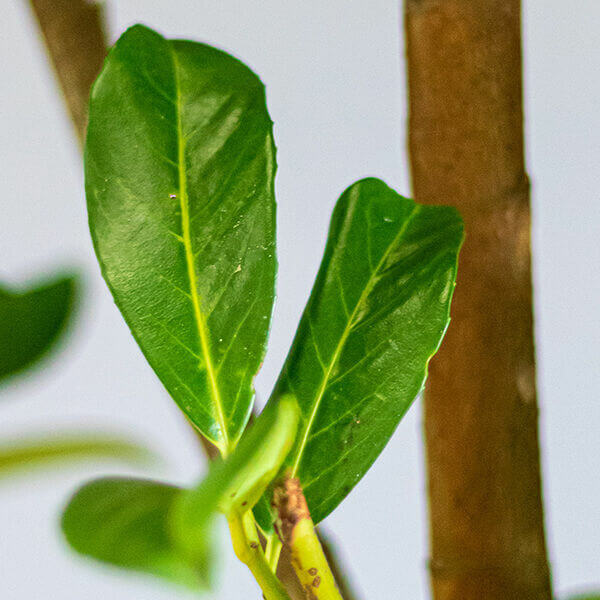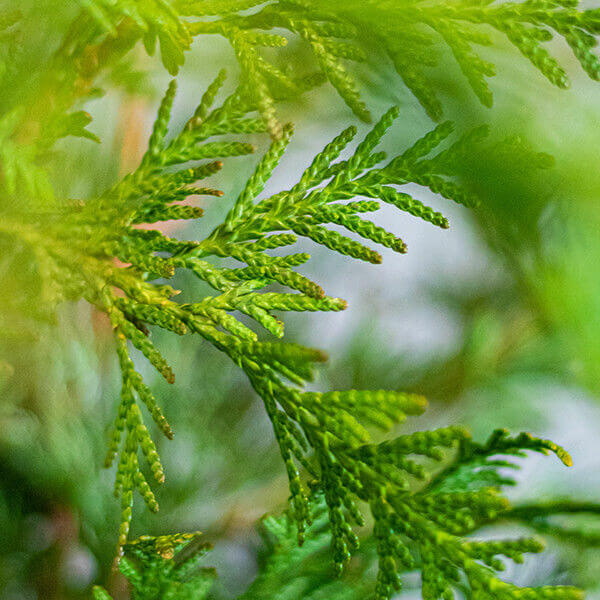Best Hedging Plants For Rooftop Gardens
Hedge Plants For Pathways
Boost your garden's allure with lavish hedge ranges such as Yew (Taxus), Thuja, Laurel, Photinia, and Bamboo, commemorated for their structural stability and ecological benefits.
Yew and Thuja offer evergreen protection and winter strength, while Laurel offers fast development and broad, fragrant leaves.
Photinia adds seasonal beauty with its dynamic red foliage, and Bamboo provides a low-maintenance, serene atmosphere.
These hedges enhance air quality, reduce noise, and develop tranquil, private spaces.
Correct planting, spacing, and maintenance guarantee energetic development and environmental consistency.
Check out how these lavish varieties can elevate your garden's charm and wellness.
Secret Takeaways
Change Your Garden With Lush Hedge Varieties
- Select Yew for its dense, evergreen growth and unequaled durability.
- Opt for Laurel for its fast growth and broad leaves, guaranteeing fast personal privacy.
- Pick Photinia for its lively seasonal foliage, which turns a striking dark red.
- Use Bamboo for a low-maintenance, winter-hardy hedge with visual appeal.
- Area plants 2-3 per meter and prune frequently for optimum growth and health.
Popular Hedge Plants
When transforming a garden with lush hedge varieties, it's important to consider popular hedge plants such as Yew, Thuja, Laurel, and Photinia due to their distinct qualities and benefits.
Yew (Taxus) is highly esteemed for its longevity and dense, green growth, making it a prime choice for sustaining landscapes.
Thuja is kept in mind for its evergreen foliage and robust winter season strength.
Photinia includes seasonal vibrancy with red leaves that darken gradually, creating dynamic visual appeal.
Laurel uses quick development and aromatic, broad leaves, suitable for quick privacy.
In Addition, Bamboo is an exceptional option for atmosphere, providing a low-maintenance, winter-hardy choice that improves the garden's aesthetic with its classy, swaying walking canes.
These choices accommodate a variety of horticultural requirements and choices.
Benefits of Garden Hedges
Garden hedges offer a wide range of benefits, making them an important addition to any landscape. These natural barriers are cost-efficient to execute and provide significant wind defense, improving air circulation and adding to noise decrease. The dense foliage of hedges like Thuja and Beech guarantees personal privacy by blocking exposure, creating a serene and remote environment.
Hedges likewise play an important role in microclimate guideline, offering a stable environment that promotes plant growth and decreases temperature level fluctuations. Their detailed leaf structures filter contaminants, enhancing air quality and contributing to a much healthier garden ecosystem.
Additionally, hedges master sound reduction, taking in and deflecting acoustic waves to lower ambient noise levels. This dual performance of providing both acoustic and visual privacy improves the overall serenity and visual appeal of any garden.
Planting and Maintenance Tips
For a successful hedge, precise preparation of the planting location is crucial. Guarantee the soil has correct pH and drainage to support strong root development.
Area the plants properly for the chosen species. Water the hedge frequently during its preliminary growth stage, changing as required with seasonal modifications.
Carry out a systematic pest control and disease avoidance method, utilizing natural or chemical treatments when essential. Frequently check for aphids, termites, and fungal infections.
Apply mulch to maintain wetness and reduce weeds. Seasonal pruning promotes dense growth and air flow, important for plant health.
Following these guidelines will help you cultivate a lively, properly maintained hedge that boosts the appeal of your garden.
Spacing and Cutting Standards
Spacing and Trimming Guidelines
Proper spacing and trimming are essential for cultivating healthy, visually appealing hedges. Adequate spacing makes sure each plant gets adequate nutrients, light, and airflow.
Follow these standards for ideal hedge upkeep:
- Spacing: Position hedge plants 2-3 plants per meter to encourage robust growth.
- Pruning Strategies: Regular pruning is essential for keeping preferred hedge height and shape. Trim brand-new growth in summer and cut down older wood during winter season.
- Seasonal Care: Adjust cutting methods and schedules according to seasonal requirements to guarantee plant health.
- Hedge Height: Regularly screen and trim to keep the desired hedge height and achieve consistent aesthetic appeals.
Abiding by these steps will guarantee your hedge grows, improving both the appeal and performance of your garden.
Choosing the Right Hedge
Selecting the Right Hedge
Picking the appropriate hedge includes examining factors such as fully grown height, foliage density, and environmental strength. Successful hedge plant selection needs comprehending each species' growth qualities and site-specific flexibility.
For example, Yew (Taxus) provides exceptional longevity and dense growth, while Thuja is noteworthy for its winter season strength. In addition, considering maintenance requirements is crucial; fast-growing species like Laurel or Privet need routine cutting, whereas low-maintenance alternatives like Bamboo or Ivy might be more effective for those looking for very little maintenance.
Ecological factors such as soil type, light availability, and moisture conditions should also guide the selection process. This cautious approach ensures the chosen hedges will flourish, providing both aesthetic and functional advantages to the garden landscape.
Shipment and Planting Suggestions
To guarantee your hedge plants grow, they must be provided by specialized couriers and planted quickly upon arrival.
Follow these important steps for successful planting:
- Soil Preparation: Enrich the soil with organic matter to enhance drain and nutrient content.
- Planting Depth: Create a trench two times the width and equivalent to the depth of the root ball.
- Watering Techniques: Water completely after planting, keeping the soil regularly moist however not filled.
- Mulching: Apply a layer of mulch to maintain wetness and suppress weeds.
Consumer Support and Service
Provided the crucial function of timely help in horticultural pursuits, our client support group is available 6 days a week through telephone, email, and social networks to use professional advice and quickly address any issues. Their dedication to fast action times ensures customer satisfaction by solving queries connected to plant health, ideal planting approaches, and maintenance schedules.

Telephone
6 days a week
This extensive support system, reinforced by a stellar 9.3/ 10 consumer ranking, highlights our commitment to enhancing the gardening experience for every single customer.
Often Asked Questions
The Length Of Time Does It Consider Hedge Plants to Establish?
Hedge plants usually need one to three years to end up being fully established, with the specific duration differing by species and growing conditions.
Effective care during this critical period is important for robust development. Constant watering, watchful weed control, and appropriate fertilizer application are essential in promoting strong root advancement.
For example, fast-growing types like Laurel may develop more quickly, while slower-growing ranges such as Yew may take longer. Thorough upkeep speeds up the establishment procedure, leading to dense and healthy hedges.
What Are the very best Hedge Plants for Privacy?
The question of the very best hedge plants for personal privacy includes evaluating evergreen and deciduous choices.
Evergreen hedges like Thuja, Laurel, and Cypress supply year-round coverage, ensuring continuous privacy.
On the other hand, deciduous hedges such as Beech use seasonal personal privacy, shedding leaves in colder months.
Key maintenance suggestions for privacy hedges consist of routine cutting, fertilizing in spring, and proper spacing-- generally 2 to 3 plants per meter.
Furthermore, consistent watering and persistent weed removal are essential for promoting healthy, dense growth.
Can Hedge Plants Attract Wildlife to My Garden?
Yes, hedge plants can attract wildlife to your garden by providing essential benefits like shelter, food, and nesting websites, thereby boosting local biodiversity. For example, yew, holly, and laurel are excellent for bring in birds, while ivy supports a range of bugs.
Nevertheless, it is essential to note that there are some drawbacks, such as increased upkeep to handle pests and routine maintenance. Carefully picking and keeping hedge varieties can assist stabilize these benefits and downsides, eventually promoting a sustainable and lively community in your garden.
Exist Any Flowering Hedge Plants Available?
Yes, there are flowering hedge plants readily available that can enhance the appeal of your garden.
For example, Elaeagnus, likewise referred to as Olive Willow, produces fragrant white flowers in the fall, adding a touch of sophistication.
Photinia, another popular option, showcases vibrant red leaves that develop into an abundant green, developing a dynamic visual impact throughout the seasons.
To guarantee these plants grow, it's necessary to practice appropriate pruning methods and seasonal upkeep, such as cutting brand-new growth in the summer season and cutting back in the winter.
These steps will assist preserve the health and visual appeal of your blooming hedges.
How Do I Avoid Bugs in My Hedge Plants?
To avoid bugs in hedge plants, use natural bug control approaches and keep proper hedge care. Present beneficial insects like ladybugs, which prey on harmful pests, to produce a well balanced community.
Frequently check your hedges for indications of invasion Additional info and without delay get rid of any afflicted parts to prevent the spread. Guarantee the health of your hedges by applying balanced fertilizers and providing appropriate water.
Use mulching to maintain soil moisture and correct spacing to decrease plant tension and promote robust growth. These practices jointly help in lessening pest problems and maintaining a healthy hedge.
Conclusion
In essence, selecting the ideal hedge varieties such as Yew, Thuja, and Laurel can transform any garden into a serene sanctuary. These plants offer year-round plant, enhance aesthetic appeal, and deal practical benefits like sound reduction and wind defense.
Appropriate planting methods, precise spacing, constant watering, and seasonal trimming are vital for optimum development.
Trustworthy shipment services and professional customer assistance guarantee a seamless experience from purchase to planting, making it easier than ever to elevate your outside space.
Garden hedges use a wide variety of benefits, making them an important addition to any landscape. These natural barriers are affordable to carry out and offer significant wind security, improving air circulation and contributing to sound reduction. The thick foliage of hedges like Thuja and Beech ensures personal privacy by obstructing exposure, developing a peaceful and remote environment.

Pruning Methods: Regular pruning is essential for keeping preferred hedge height and shape. Trim brand-new growth in summer and cut back older wood throughout winter.